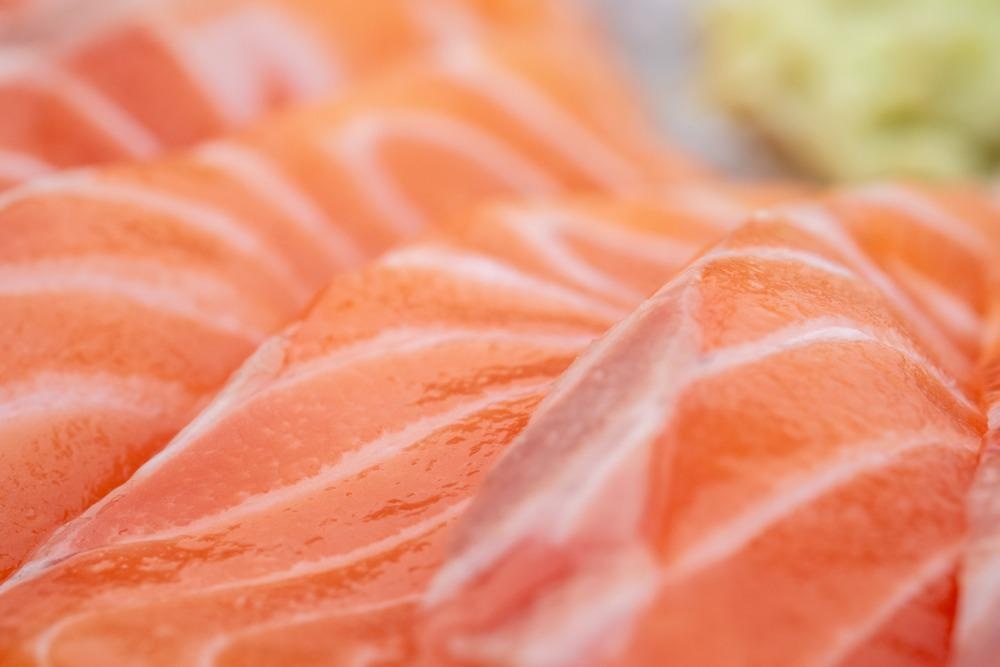A group of researchers proposed relaxing the consumption of wild-caught fish and promoting seafood grown in a laboratory. They believe that this approach could successfully ease the pressure off global fisheries.

Image Credit: srimapan/Shutterstock.com
The continual increase in the world’s population has enhanced the demand for food substantially. Over the last couple of years, the world has witnessed the emergence of lab-grown chicken breasts and cultured beef burgers.
Typically, seafood, such as fish, shrimp, and crab, that are sold in the market are either farm-raised or wild-caught. At present, several companies are in the process of developing cell-based shrimp, salmon, yellowtail, carp, crab, and lobster. However, most of these products are in the taste-testing stage and are yet to be marketed.
Development of Cell-Based Seafood
Production of cell-based seafood involves isolation of muscle cells from fish, mollusks, or crustaceans and, thereby, propagating it in ideal conditions inside a bioreactor. Cells are grown on an edible scaffold; their structure and texture are designed similar to that of wild-caught fish. The main focus of scientists has been to develop cultured seafood that could not be distinguished from wild-caught fish, prawns, or crabs.
In the recent past, researchers have reported the presence of mercury, toxins, pathogens, and micro-particles of plastic within wild-caught seafood. Products developed using this technology would be safe for consumption with high nutritive values. As the lab-based seafood has been developed from cells of fishes/prawns/crabs, it contains all the allergens found in wild-caught seafood.
Further Reading: Future Applications of 3D Printing Meat
According to Sebastian Rakers, co-founder of Bluu Biosciences, cell-based fish consists of similar ingredients that one finds in conventionally produced fish. However, this technology does not require slaughtering fish; instead, real fish meat can be produced from fish cell lines.
These cell lines are obtained via biopsy of a living fish and the target fish is not killed during the process. At present, Bluu Biosciences has developed many cell lines from adult tissue biopsies and they have adopted novel proprietary technologies and non-GMO immortalized cell lines for the production of fish meat.
Seafood Industry and Cell-Cultured Seafood Technology
Seafood industries such as Nomad Foods (Europe’s largest frozen food company) and BlueNalu, a California-based sustainable food company, have focused to be the global leader in cell-cultured seafood technology. Both the companies have collaborated to identify product opportunities and determine consumer insights for lab-based seafood in Europe.
From a global perspective, the partnership between these two companies is important because the implementation of this technology could reduce the problems of overfishing. This new technology would help promote one of the goals of the United Nations for global sustainable development, i.e., protecting life below water.
Safety Standards
For any innovation, it is mandatory to assess its safety. For example, in agriculture (e.g., genetically modified organisms), scientists, regulators, and industries have developed many regulations to ensure product safety. Similarly, in the development of seafood using culture-based technology, a group of experts is working together to develop safety standards for the newly developed food.
Difficulties Associated with Lab-Grown Seafood
One of the difficulties faced by the manufacturers is related to the uncertainty of consumers to readily accept lab-grown fish over the seafood produced via conventional methods. A group of scientists feels this switch could reduce fishing of threatened species and, thereby, protect them from extinction. Therefore, cell-based seafood is extremely beneficial to fisheries.
Another difficulty that the manufacturers face is making the newly developed food product cost-competitive. The high cost of cell-based seafood, i.e., significantly more than wild or farmed fish, would play a pivotal role in the selection of products.
By analyzing the consumer’s take on the lab-grown meat replacing the traditional meat, researchers observed that likeness to the real food plays an important role in consumers’ acceptance of a product.
Another group of scientists pointed out that forage species like anchovies face greater threats from overfishing; however, these species are not currently aimed to be designed via cell-based methods in the laboratory because the financial returns are not significant.
Would You Eat Lab-Grown Fish?
Video Credit: Bloomberg Quicktake: Now/Youtube.com
They further highlighted that although tuna and salmon fisheries are relatively well-managed; these species are more likely to be developed in laboratories owing to greater financial returns.
Further, there are thousands of fish species that are consumed by humans and the availability of diverse choices makes seafood appealing. Cell-based seafood cannot replace them all and would fail to reach consumers' expectations.
Can Lab-Based Seafood Become the Future of the Food Industry?
Several seafood companies, i.e., those associated with the development of cell-based seafood products, believe that this product could become one of the most sustainable and alternative sources of protein. As consumers have become more aware and support environmentally friendly approaches, this technology supports the mindset of using renewable energy and protecting wild species.
At present, more than eighty startup companies are associated with the development of cultivated meat and seafood. Scientists predict that cell-based seafood and meat will become competitive in the future and the development cost will reduce with technological advancements and optimization in the production process. When the cost of the product would go below the cost of seafood produced via the conventional method, consumers' preferences might shift significantly.
References and Future Reading
Anderson, E. and Li, J. (2021) Cultivated Meat & Seafood – Background. [Online] Available at: https://www.canr.msu.edu/news/cultivated-meat-seafood-background
Urdapilleta, L. (2021) Lab-Grown Fish: The Next Revolution in Sustainable Seafood? [Online] Available at: https://www.triplepundit.com/story/2021/cell-cultured-seafood/729016
Halpern, S.B. et al. (2021) The long and narrow path for novel cell-based seafood to reduce fishing pressure for marine ecosystem recovery. Fish and Fisheries. 22(3). pp. 652-664
Howell, M. (2021) Alt-seafood: cell-based seafood in the European Union. Online] Available at:: https://thefishsite.com/articles/alternative-seafood-cell-based-seafood-in-the-european-union-bluu-biosciences-sebastian-rakers
Disclaimer: The views expressed here are those of the author expressed in their private capacity and do not necessarily represent the views of AZoM.com Limited T/A AZoNetwork the owner and operator of this website. This disclaimer forms part of the Terms and conditions of use of this website.